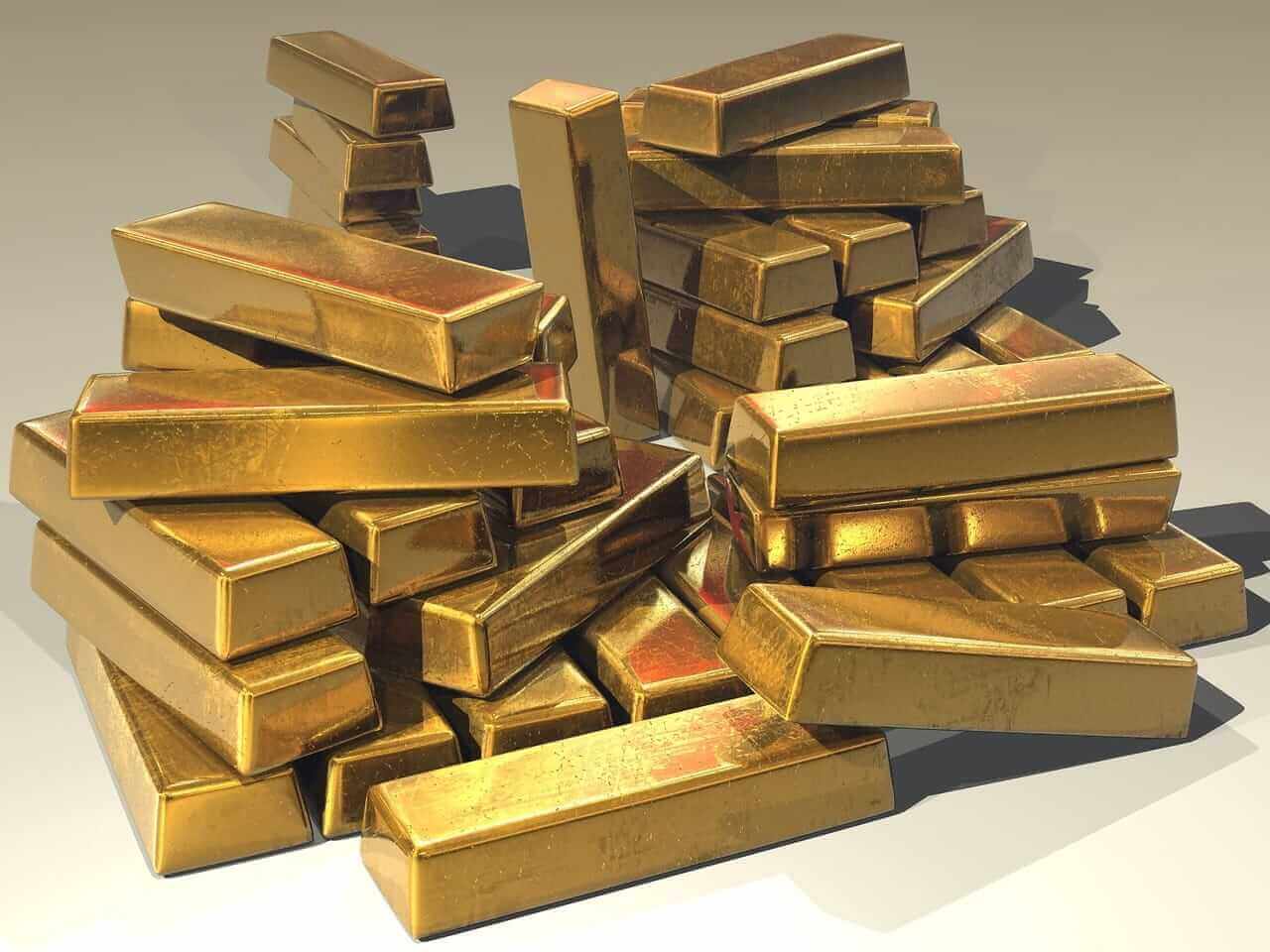
Stability is the strength to stand or endure. Synonyms are reliability, strength, sturdiness, soundness, firmness, durability, dependability, and solidity, and gold has all those characteristics since the turn of this century. Fungibility is the ability of a good or asset to be interchanged with other individual goods or assets of the same type. Synonyms are compatible, synonymous, convertible, commutable, correlative, equivalent, and exchangeable, and gold has all these attributes.
There have been many technological advances over the past years, but gold’s role in the worldwide financial system remains significant. Gold has been around for thousands of years, while all the world’s fiat currencies are essentially historical newcomers.
Gold pulled back from its most recent high, creating a dangerous technical formation. However, the precious metal’s powerful long-term trend, stability, and fungibility suggest that higher highs are on the horizon.
The double-top slowed gold’s ascent
The least three peaks in the gold futures market were in a $9 band.

The chart highlights nearby COMEX gold futures rose to $2063 per ounce in August 2020 and $2,072 in March 2022 and May 2023. The latest two peaks created a double-top formation on the long-term change, which tends to signal a technical reversal. At over $100 lower than the May 2023 high on June 13, gold has corrected after failing to make even a marginal new peak.
Rate hikes and a stable dollar index have delayed new highs
Interest rates and the level of the world’s reserve currency can support or weigh on gold prices. Rising interest rates increase the cost of financing long gold positions, typically encouraging investors and speculators to sell gold and buy interest-bearing assets. While gold has held up well since March 2022, when the Fed began increasing the short-term U.S. Fed Funds Rate from 0.125% to 5.125% at the May 2023 FOMC meeting. Moreover, quantitative tightening has put upward pressure on rates for further bond maturities. Rising rates tend to be bearish for gold.
In September 2022, the U.S. dollar index rose to a two-decade high.

The chart illustrates the dollar index’s rise to 114.745 in September 2022, where it ran out of upside steam. Since the dollar is the international pricing mechanism for gold, a strong dollar tends to weigh on gold, while a weakening dollar is often bullish. In September 2022, when the index peaked, nearby COMEX gold futures prices fell to $1,613 per ounce. The decline in the dollar index over the past months sent gold futures back over the $2,000 level.
Over the past weeks, higher interest rates and a stable dollar index closer to the recent low than the September 2022 high have kept gold prices below the $2,000 level. While the action in the dollar index has been supportive, bonds remain a bearish factor.
Watch central bank actions, not the rhetoric
The markets will hear from the U.S. Fed this Wednesday, and while many market participants believe the central bank will pause and leave the Fed Funds Rate at 5.125%, others think another 25-basis point hike will occur.
The Fed reached its 5.125% 2023 target for the short-term rate at the May FOMC meeting. The consumer and producer price index data over the past months have declined. As inflationary pressures decrease, the case for rate hikes diminishes. Moreover, the recent bank failures and threats of a recession could cause the Fed to pause as the banking sector has already become more selective in lending, tightening credit. Finally, since it takes time for rate hikes impact to filter through the economy, the Fed is now at a point where it can sit back and watch the data to gauge monetary policy’s effect over the past year.
On the other hand, robust employment data, inflation that remains stubbornly high and above the central bank’s 2% target rate, and the recent stock market rally could cause the central bank to increase the short-term rate by 25 basis points on June 14. For the first time in over a year, the Fed’s monetary policy decision at the June meeting is a coin toss.
I believe there are one of two possibilities when we hear from the central bank this Wednesday:
- A 25-basis point hike with a dovish statement that tells markets the central bank is done for 2023 or will pause and become data-dependent.
- A pause with a hawkish statement warning markets that any uptick in inflationary pressures will lead to further interest rate hikes.
The statement could be more significant than the Fed’s action at the June 14 FOMC meeting.
De-dollarization favors gold
While the nearby dollar index futures contract has been sleeping between the 100 and 105.50 level, it remains closer to the bottom end of the trading range since the September 2022 high. Moreover, the index only measures the U.S. currency against other world reserve foreign exchange instruments, with a 57% exposure to the euro.
The increasing potential for a BRICS currency that challenges the dollar’s role as the worldwide reserve means of exchange would weaken the U.S. dollar’s position in the global financial system. China is the leading force in de-dollarization, seeking to replace the United States as the primary economic power. A decline in the dollar’s worldwide pricing role could push gold prices higher.
Buying the dip will continue to be the optimal approach
The bull market in gold is not a new event, as it began in 1999 when the precious metal reached a significant bottom at $252.50 per ounce. Since then, gold has made higher lows and higher highs.

The long-term chart dating back to the 1970s shows gold’s bullish path. Buying gold during corrections on a scale-down basis has been the optimal approach for nearly one-quarter of a century as the technical trend remains bullish. Moreover, de-dollarization and the odds that the trajectory of interest rate hikes is ending support a continuation of the pattern of higher lows and higher highs. The double-top formation on the long-term chart may have caused gold’s rally to pause, but it will likely continue to carry the precious metal to higher highs over the coming months and years.
Gold’s stability and fungibility in an uncertain world favor the upside as markets across all asset classes reflect the economic and geopolitical landscapes.
On the date of publication, Andrew Hecht did not have (either directly or indirectly) positions in any of the securities mentioned in this article. All information and data in this article is solely for informational purposes. For more information please view the Barchart Disclosure Policy here.






